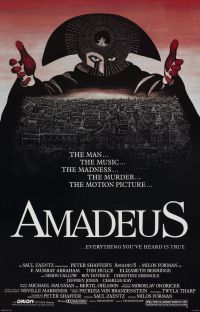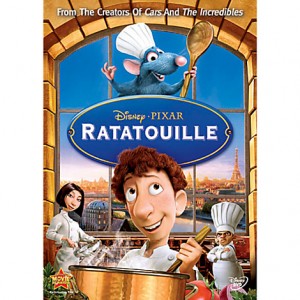Immersion. It’s that feeling of being completely swept away in a story, so much so that you forget the real world exists outside it. As I’ve gotten older that sensation has gotten harder to find. Maybe after years of writing my brain is too accustomed to dissecting what I read. Whatever the reason, when I do manage to lose myself in a story, it’s the best kind of treat.
One thing’s for sure. When it comes to immersion, video games have a distinct short-cut that books lack. When you read a novel, you passively watch events unfold. The best books make you feel as though you live these events through the eyes of the character. But however immersive a book is, you will always be the passive observer, unable to influence the events unfolding before you. What I’m going to talk about in this post is how we can leverage video games’ greatest cheat—interactivity—into making our own writing the kind that sweeps the reader away.
A video game is like a story where the reader instead of the writer is in charge… at least to a limited extent. In a book you place your faith in the author, but when gaming it’s your responsibility to see that the hero survives to reach the next scene. For somewhere between eight and 120 hours (curse your vastness, Skyrim!) you are the driving force behind whether the hero succeeds or fails. Even with the most clichéd of plots and characters made of pure cardboard, this sense of agency is a video game’s greatest weapon in capturing and holding interest. I’m going to examine two games that go about this in very different ways, examine how we might use those techniques to further our own writing, then offer a brief warning.
I completed Naughty Dog’s The Last of Us just about a week ago so this seems as good a time as any to gush all over it. If ever there was a video game contender to submit as “serious art” this game is it (Honorable Mention goes to L.A. Noire). At a glance nothing seems particularly remarkable about the game or its story. The Last of Us is essentially a zombie survival horror game, where society has collapsed thanks to an infectious outbreak that “zombifies” normal people. A hard-bitten survivor named Joel must escort a fourteen year old girl named Ellie to safety through areas teeming with both infected and with equally hard-bitten human survivors. About the only thing original the premise does have going is that the infectious agent is fungal in nature and its mind-warping abilities are based on a real class of fungus: http://en.wikipedia.org/wiki/Cordyceps (warning: nightmare fuel).
Despite a fairly pedestrian premise, the characters of Joel and Ellie are so well written, acted and animated that it elevates the entire game to something sublime. Combat is merciless, usually punishing any mistakes with instant death. Playing as both characters alternatingly, you will feel every hurt they incur and their mounting sense of despair. When you (as Joel) brutally kill a man who is attacking Ellie, you’ll feel a savage glee that is entirely intentional yet profoundly unsettling. The sense of a world falling apart around Joel and Ellie is palpable throughout the game, and though I won’t spoil events, the plot is driven believably and courageously by its characters and delivers an ending that will positively haunt you.
But how do we recreate this in writing form without video game short-cuts? As in the game, it starts with character. While a reader can’t direct the actions of your characters, if you delve deep into the mind state of your viewpoint characters and ensure that the actions of the character are so well-grounded that they feel almost inevitable, you can transport the reader into the mind of that character fully. Make the reader understand and believe in the actions of the character and you will reel them in.
In stark contrast to the total character immersion of The Last of Us we have the total world immersion of Elder Scrolls V: Skyrim. An open world fantasy role playing game, Skyrim has no structured plot per se, only a series of quests that you unlock by exploring the vast world of the game. There are two sets of “main” plot quests, but they (and all the rest of the quests) are entirely optional. Accomplishing some quests will make others unavailable, as everything is interconnected. I still remember when my character was offered a chance to join the Dark Brotherhood (guild of assassins) and had to choose between several people to assassinate to complete my initiation. Instead I turned on my Brotherhood contact and after dispatching them, I got a message that several quests were permanently failed. But then a new message flashed up on the screen: “NEW QUEST: DESTROY THE DARK BROTHERHOOD.” Niiiiiice.
This is an entirely different level of immersion, a game and a story where you literally have input into everything. But I’m not advocating we all start writing Choose Your Own Adventure novels, because you can still get this sense of total world immersion in a book with a fixed plot. The key is in the worldbuilding. Robert Jordan’s early Wheel of Time books did an outstanding job of building a working magic system where you could see exactly how the pieces fit together. He established the rules early on, then later when he had characters figure out how to bend the rules to achieve greater ends, it all felt very natural, like another set of laws for physics. If you focus on constructing your world so that all the pieces fit and move together in ways that the reader can see and appreciate, you can achieve something similar.
So we’ve gone over immersion by character and immersion by worldbuilding. And now, the promised warning: with great immersion comes great expectations and therefore great responsibility. The more a player (or reader) feels they have a stake in a particular story, the more they start to dictate in their mind how that story “should” end. With enough readers or players, there’s going to be a pretty large divergence in expectations. I’m sure everyone has their own example, but it’s worth remember that the more investment the person has put into the story, the greater the anger if they feel the writer doesn’t stick the landing. And if you have enough readers, you won’t be able to please everyone.
Of course, I suspect that for most of us, that’s a problem we’d relish having.

 When I was a child, I considered myself lucky enough to own an original 8bit Nintendo Entertainment System. Even back then, I gravitated toward the role playing games, and deeply enjoyed the Zelda, Dragon Warrior, and Final Fantasy series. Even those games, in their primitive brilliance, were able to tell great stories.
When I was a child, I considered myself lucky enough to own an original 8bit Nintendo Entertainment System. Even back then, I gravitated toward the role playing games, and deeply enjoyed the Zelda, Dragon Warrior, and Final Fantasy series. Even those games, in their primitive brilliance, were able to tell great stories.
